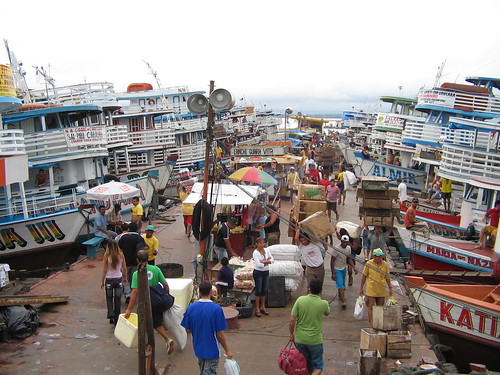Rubber's Boomtown
Deep in the middle of the Amazon Jungle there is a city named Manuas. Situated near the confluence of the Negro and Amazon rivers Manuas acts as a transportation hub for the interior of South America. Founded to keep Spanish armies from floating into the Portuguese mainland but it later became wealthy because of the rubber trade.
Rubber trees naturally occur throughout the Amazon rain forest. Latex rubber can be extracted from trees in a way that is similar to gathering sap from maple trees. Although colonists and native South Americans knew about latex rubber there were few good uses for the sticky substance until 1844. In that year Charles Goodyear developed the first vulcanization process, this would lead to the now common brand of tires. By 1879 industries began exploring and extracting rubber from the Amazon.
The fundamental fact that explains Brazil’s entry into and domination of natural rubber production during the period 1870 through roughly 1913 is that most of the world’s rubber trees grew naturally in the Amazon region of Brazil. The Brazilian rubber industry developed a high-wage cost structure as the result of labor scarcity and lack of competition in the early years of rubber production. Since there were no credit markets to finance the trips of the workers of other parts of Brazil to the Amazon, workers paid their trips with loans from their future employers. Much like indenture servitude during colonial times in the United States, these loans were paid back to the employers with work once the laborers were established in the Amazon basin. (source)
Manuas was named after the original inhabitants of the area, the Manaós. In their language the word means "mother of God," ("Mãe de Deus" in Portuguese) an idea that would certainly conflict with the Catholic colonists setting up this new town. If the rubber boom had not occurred it is unlikely that any other wealth would have come into the area. Manuas' landmarks such as the Teatro Amazonas could never have been built without rubber money.
The rubber boom died out around the 1920s when industrialists discovered that rubber could be grown and harvested at a lower cost in Malaysia, Sri Lanka, and Africa. At this time synthetic blends of rubber also became prevalent reducing the amount of actual latex rubber needed for many rubber products.


No comments:
Post a Comment